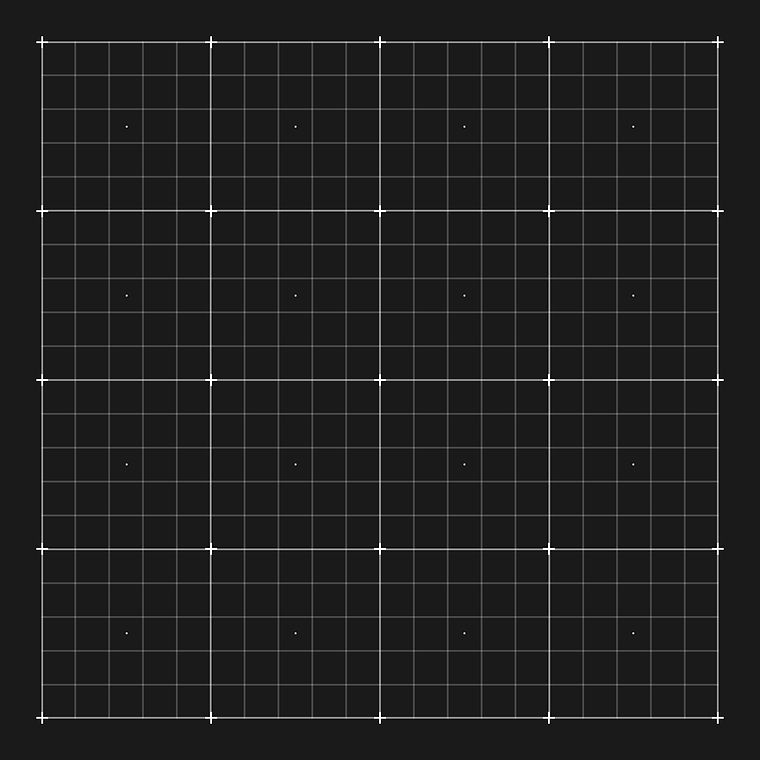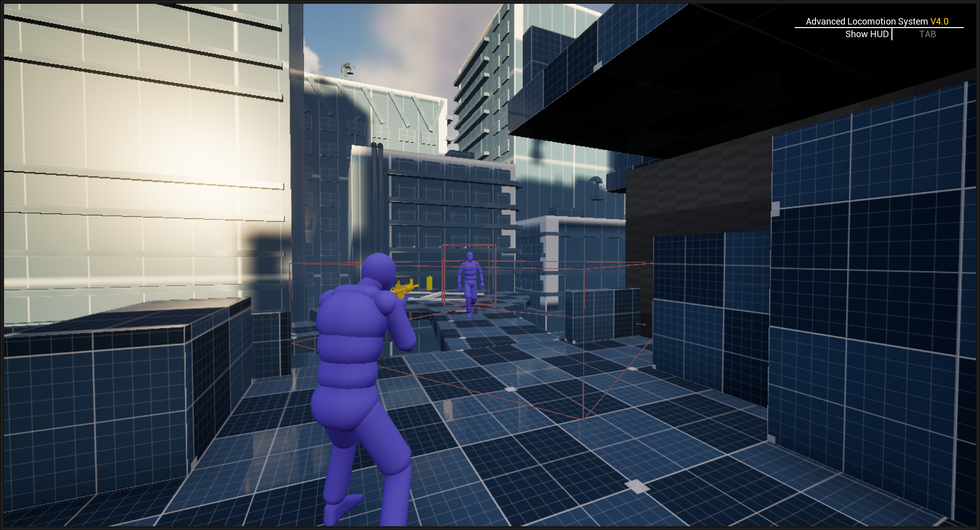

Cyberpunk2024
Description
Cyberpunk2024 is a action adventure cyberpunk blockout, featuring a linear progressive experience along highrise rooftops and promenads and alleyways, avoiding cybersecurity while smugling a cybernetic to a black market trader,
This project is a part of a 3 level project by a group each working and dedicated to their level,
Imlisen Level 1- Heist
Tomas Level 2 - Escape
Victor Level 3 - Deliver
Project Summary
Game Type: (Action adventure Shooter - Third Person)
Genre: (Sci-fi, Dystopian, Cyberpunk )
Platform: (PC, Console,)
Role: (Level Designer, Game designer)
Development Tools Used: Unreal Engine, Miro, Azure Devops +Git
Team Size: (3)
Gameplay
This is a third person, action adventure shooter built in Unreal Engine using ALS (Advanced Locomotion System). The level is a linear rooftop and urban promenade route set in a dense, neon lit cyberpunk cityscape inspired by The Fifth Element. The goal is to deliver a stolen cybernetic implant to a vendor waiting in a high rise apartment while avoiding or eliminating corporate security forces tracking you down.
The player has multiple gameplay approaches:
Use stealth to sneak past or perform takedowns on patrolling guards.
Engage in direct combat using a pistol for a more aggressive route.
Navigate the environment with crouching, sprinting, climbing, and vaulting, allowing for traversal across vertical rooftops, fire escapes, and tight back alleys.
Guards are placed to encourage tactical decision making, with a mix of stationary and patrolling behaviors. Combat areas and stealth paths are carefully spaced to allow dynamic pacing between action and tension.


Video
Core Design
The core design of this project is to develop cohesive narrative driven level that follow the quest objective to deliver the stolen cybernetic from previous group memebers level and deliver it, Creating obstecles and enemy encounters that can be dynamicly approached stealthly or loud, The level spans across highrise rooftops and use of verticality in between story beats and traversal to create more atmosphereic presence and immersion,
The story is breakdown of a main objective which is to steal a cybernetic from a high corpo bank, which is part of level 1 blocked out by my teammate Imlisen in level 1,
the player manages to escape right in time for level 2 which Tomas convey with a stealhy rooftop escape sequence in level 2, after the player manages to escape, the corporation sends more security to the neighbouring areas and its up for the player to deliver the cybernetic in my level 3.
Interactive storytelling techniques
enviromental storytelling was a important aspect of this level to convey the world and set up the enviroment to the player.

Level design process
With several weeks allocated for this project, I structured the level around a clear beginning, middle, and end to ensure strong pacing and flow over a roughly 15 minute playtime.
I began by planning out the narrative beats and major event, focusing initially on the mid to late stages of the level, such as encounters, obstacles, and story driven moments. This helped define the overall arc and allowed the early areas to be built to properly ramp up tension and momentum.
The initial blockout focused on:
Establishing core traversal paths and combat arenas
Blocking in major transitions between rooftops, alleys, and the apartment at the end
Creating varied moments of stealth, platforming, and combat
As the blockout evolved, I continuously iterated on:
Encounter spacing and challenge progression
Verticality in navigation and line of sight
Story progression and environmental storytelling beats
The process involved multiple internal playtests to evaluate pacing, clarity, and engagement, leading to regular updates in layout and encounter design.


Technical Breakdown
For this project, I implemented core gameplay systems and enemy logic using Blueprint scripting in Unreal Engine, building on top of ALS (Advanced Locomotion System) for third person movement including sprinting, crouching, climbing, and vaulting.
Key systems I scripted:
Gunplay: Shooting mechanics with projectile or hitscan logic, damage calculation, and enemy health systems.
AI Behavior: Simple patrol routes, stationary guards, and reactive combat states. Enemies can detect and engage the player based on line of sight or sound.
Takedowns: Stealth melee takedown functionality for enemies unaware of the player.
Checkpoints & Death Handling: Checkpoint save system and respawn after death or falling off the map.
Interaction Mechanics: Key item pickups, door unlocking, and mission objectives.
This scripting allowed for a functional and replayable gameplay loop, integrating stealth, traversal, and action within the level’s narrative context.

Problem Solving
One of the biggest challenges in this project was working with ALS (Advanced Locomotion System), which, while powerful, is complex and highly animation driven. Integrating it with custom gameplay systems and AI presented multiple issues.
Key Issues & Solutions:
AI + ALS Compatibility: ALS wasn’t designed for AI characters, and trying to get AI to use ALS animations and states caused instability.Solution: I implemented a workaround by using a simple third person AI for patrolling and then spawning an ALS compatible enemy actor only when the player was detected. This gave the illusion of seamless AI integration while maintaining ALS fidelity for combat.
Gun Integration: I wanted to use the first person gun mechanics from the FPS template while retaining third person visuals from ALS.Solution: I manually scripted a hybrid setup, attaching the gun to the ALS character’s hand and integrating fire/damage systems, ensuring the weapon worked in sync with ALS animations and aiming.
These solutions allowed me to retain the visual and gameplay fidelity of ALS while keeping development agile and modular. It was a valuable experience in combining prebuilt systems with custom logic through creative problem solving.
Feedback / playtesting
Throughout development, I engaged in regular playtesting and had mentoring sessions with a lecturer, which proved invaluable in shaping the level's design and polish.
Key Iterations & Takeaways:
I continuously replayed the level to analyze pacing, balance, and encounter flow, identifying moments that needed restructuring.
Based on feedback, I removed or redesigned certain areas (“killing my darlings”) to improve player experience, narrative pacing, and performance.
With guidance, I made several quality of life adjustments, including lighting tweaks for clarity, repositioning enemies for fairer engagements, and simplifying geometry in areas that caused pathfinding bugs or disoriented players.
I also dedicated time to QA testing, debugging AI behavior and checkpoint logic to ensure a stable and fluid gameplay loop.
This iterative process helped me deliver a more polished, tightly scoped level, and reinforced the importance of external feedback in validating and refining design choices.

Reflection
This project was an important learning experience in designing a hybrid linear third person level, blending action, stealth, and environmental storytelling in a compact, narrative driven space.
Key Takeaways:
I learned how to construct levels with intentional pacing, using obstacles, cover, and enemy placement to guide the player and maintain tension.
I developed a better understanding of encounter design and level progression, particularly how to support multiple playstyles,stealth vs. aggressive combat, within the same space.
The mentorship sessions were especially valuable, helping me reflect on design choices, tackle technical challenges, and adapt my ideas in a focused and iterative way.
I also improved my ability to prioritize level composition, ensuring that every area felt purposeful both in form and function.
This experience gave me confidence working in Unreal Engine and reinforced the importance of iteration, feedback, and flexible problem solving in level design.
Showcase

.png)














